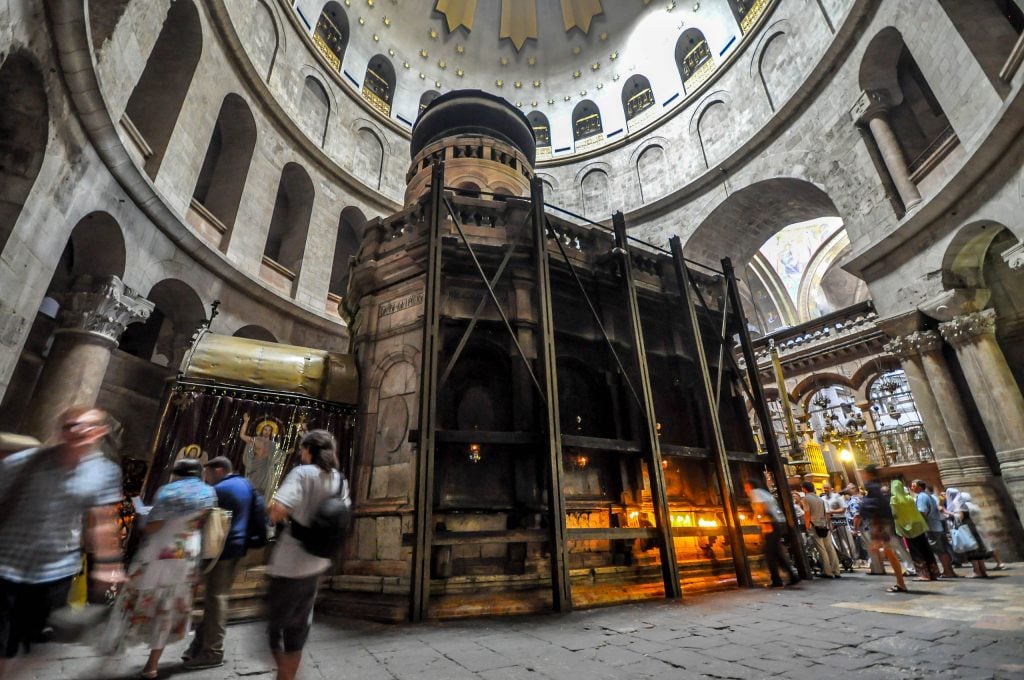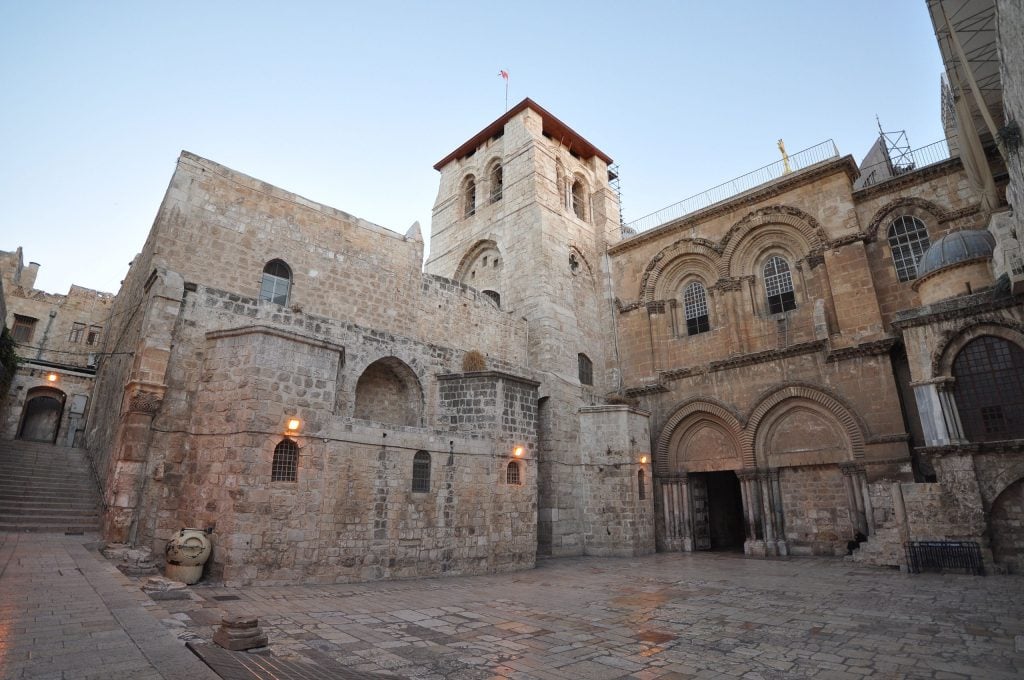Art World
Tomb of Jesus in Jerusalem to Undergo Major Restoration
It is believed to be the site of the resurrection.

It is believed to be the site of the resurrection.

Hili Perlson

The Church of the Holy Sepulchre in the Old City of Jerusalem, which houses the tomb site where Jesus is said to have been buried, announced on Wednesday, March 23, that the shrine which encloses the tomb is set for major restoration, the Times of Israel reports.
Work could begin on May 1, following the Easter holiday which celebrates the resurrection of Jesus that is believed to have occurred at this very site.
The Aedicule, a small marble shrine standing underneath the church’s dome, was built in the early 19th century over the cave where, according to tradition, Jesus had been buried. Weakened by time and by the daily influx of hundreds of pilgrims and tourists, the shrine’s marble slabs were reinforced by a metal frame several decades ago, in order to keep the structure in place.
As part of the major overhaul, the shrine will be painstakingly dismantled and rebuilt during eight months of restoration work, according to a statement by the Custody of the Holy Land, which oversees Roman Catholic properties in the area.

The Church of the Holy Sepulchre, Jerusalem. Photo by Jorge Lascar, Creative Commons Attribution 2.0 Generic license.
In the process, usable parts are to be preserved and cleaned, while unsalvageable sections will be replaced altogether, and the shrine’s supporting structures fortified.
The restoration will be carried out by a Greek team, and is expected to be completed in early 2017. Throughout the restoration period the Church of the Sepulchre will remain accessible to visitors.
The project will be funded by Christian groups including the Greek Orthodox, Franciscans, and Armenians, in addition to other public and private donors.
According to tradition, the Church of the Holy Sepulchre contains the two holiest sites in Christendom: In addition to the empty tomb, the church also houses the site known as Calvary or Golgotha, where Jesus of Nazareth was crucified.
Located in the Christian Quarter in the Old City of Jerusalem, the church, which was consecrated in the fourth century, also encloses the final four stations of the Via Dolorosa, representing the final episodes of Jesus’ Passion.